Digitized publications on new website tell early film, broadcast, recording history
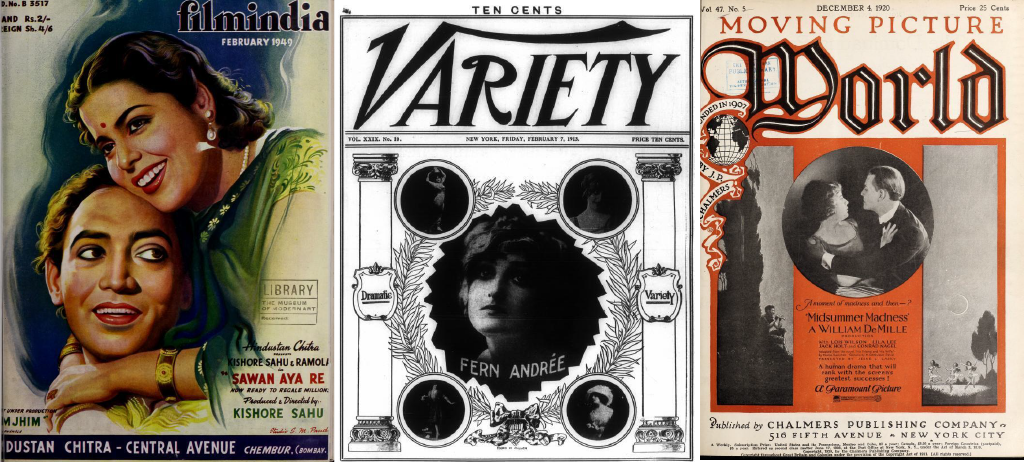
Some of the titles found in the Media History Digital Library. Source: MDHL
The early history of the film industry is written in yellowing print magazines and newspapers, gathering dust in remote corners.
But Eric Hoyt is helping to make that history much more accessible to researchers and others.
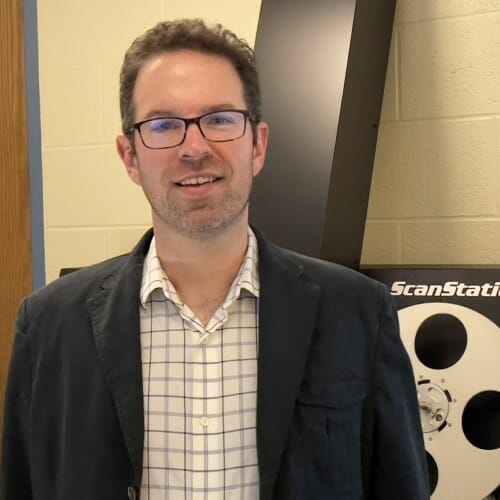
Eric Hoyt Submitted photo
Hoyt is director of the Media History Digital Library (MHDL), a free online resource, containing digitized copies of magazines, books, and trade papers related to the history of film, broadcasting, and recorded sound. Hoyt is also the Kahl Family Professor of Media Production in the Department of Communication Arts.
The MHDL is housed within the Wisconsin Center for Film and Theater Research and the Communication Arts Department, though its online reach is global.
MHDL has recently launched a new website, complete with an updated interface, new Hollywood trade papers, and international content.
It’s a treasure trove of media history for historians and film fans, offering everything from early 20th-century fan magazines like “Photoplay” to magazines like “Variety” and articles about old Hollywood stars.
MHDL was founded in 2011 by David Pierce. Hoyt became involved in the MHDL as a graduate student at USC, as Pierce was starting to get MHDL off the ground.
“There was one particular collector that Pierce knew in L.A. who had this enormous collection of magazines,” Hoyt said, “Pierce needed someone reliable in L.A., with a car. That became me.”
Hoyt volunteered on the project, driving to the collectors’ house, picking up magazines, and delivering them to a scanning center.
“As a film history researcher myself, I knew the value that these magazines had, and I knew there was an appetite for them,” Hoyt said.
Before the MHDL, the availability of historic film trade papers was limited to print collections and microfilm.
“Almost no one studying film or broadcasting history was using a number of these magazines because they were so inaccessible and forgotten,” Hoyt said, “so the MHDL was an entry point for folks who wanted to learn more about that history.”
When it began, the MHDL was doing something new. “We realized that you could build comprehensive digital editions of magazines that don’t exist as a complete run in any library or archive.”
For instance, a silent film trade paper called “Moving Picture World” is a key source for silent film historians, but it’s hard to find. “There’s no library or archive in the entire world that has the entire print run of Moving Picture World, but we’ve been able to create a virtual edition of it,” Hoyt said.
This virtual collection came together from a variety of sources, including the Museum of Modern Art (MoMA), the Library of Congress, and private collectors. “This is a very collaborative project,” Hoyt said.
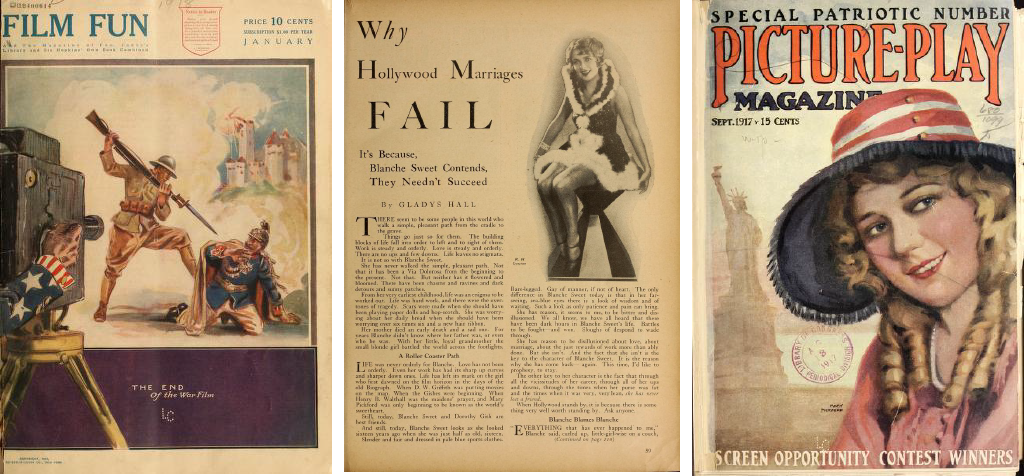
Some of the titles found in the Media History DIgital Library. Source: MDHL
Since its inception, the MHDL has grown from 100,000 pages of digitized content to 3 million pages.
The collection has been able to grow in part because of passionate collectors. “It was collectors who saw this value in these magazines, and then donated them to libraries and archives,” Hoyt said, “so there’s a lot of credit that’s owed to passionate individuals who cared about these materials when not many other people did.”
Film historian appreciate MHDL
MHDL is used every day by film historians, researchers, and fans of film history.
One is Marsha Gordon, a film studies professor at North Carolina State and documentary filmmaker. Dr. Gordon recently completed an entry on women doing pioneering work in the film industry, and MHDL helped her tap into good information.
“Because of the amazing sources available at MHDL… I was stunned by how many hits I got,” Gordon said, “It’s truly one of the most valuable resources for researchers in film history, and one I use over and over again.”
Digitizing content is multi-step. After the magazines and papers get scanned, the images require editing for visual clarity and readability. “There’s always post-production work, like cropping, to get the scans to look as good as possible,” Hoyt said.
As the website gained popularity, Hoyt and other team members worked to develop an improved user experience. This led to the development of Lantern, the site’s search engine. Launched in 2013, Lantern was awarded the innovation scholarship award from the Society for Cinema and Media Studies.
“It was the first that a digital project, rather than a book, had gotten this particular award… the Anne Friedberg Innovative Scholarship Award,” Hoyt said.
Hoyt is both the director of the Wisconsin Center for Film and Theater Research (WCFTR) and MHDL. Matthew and Natalie Bernstein have also been very generous alumni supporters of the new website and the scanning of Hollywood pressbooks.
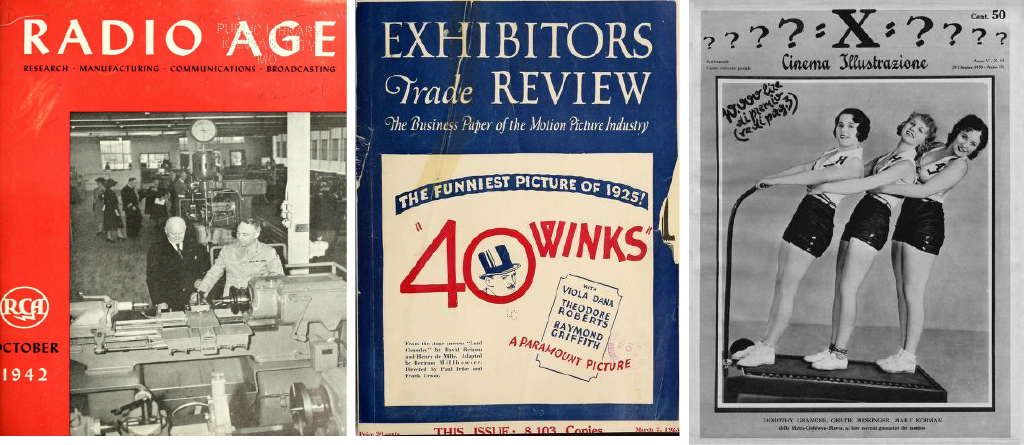
Some of the titles in the Media History Digital Library. Source: MDHL
Hoyt recently completed a three-year digital extension grant from the American Council of Learned Societies (ACLS), allowing Hoyt and the MHDL team to globalize and enhance the project.
“We had a lot to be proud of, but there were some glitchy things, and some big holes in the collection… most of the material was published before 1964.”
The other big gap, Hoyt said, was the lack of international content. Nearly all of the magazines up until 2019 were American, English-language magazines.
International content expanded
The ACLS grant allowed Hoyt and the rest of the team to expand its collection greatly, and incorporate international sources.
“We put together a task force, a group of national cinema experts, many of whom are professors around the world,” Hoyt said, “ we’ve more than tripled the amount of non-U.S. English language content.”
For example, Hoyt said, there’s been tons of Spanish language magazines published in the United States that they have been able to cover. “There’s a really vibrant and longstanding tradition of Spanish newspapers and publishers based in the U.S.”
The collection also includes varieties of Iranian, German, and Indian magazines.
In addition to the new international context, MHDL has launched a new collection-oriented website.
“It’s new and improved… this version is much more sustainable and efficient,” Hoyt said, “ I’m really proud of the way that this website came out. I think one of the reasons why it’s better is that it wasn’t just me working on it. There’s a really great team working on this.”
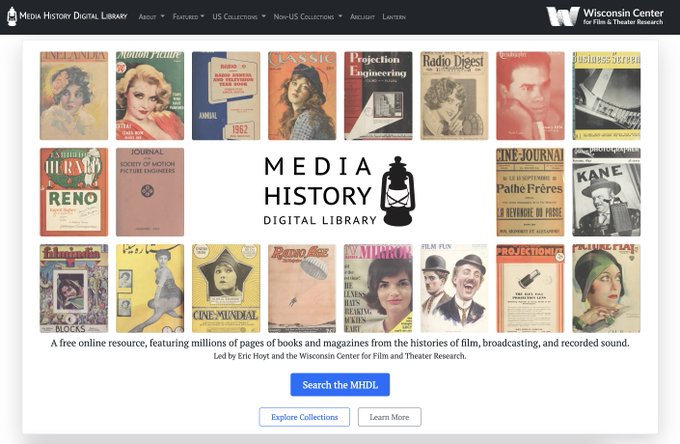
The Media History Digital Library offers a wide range of content about the film industry.




